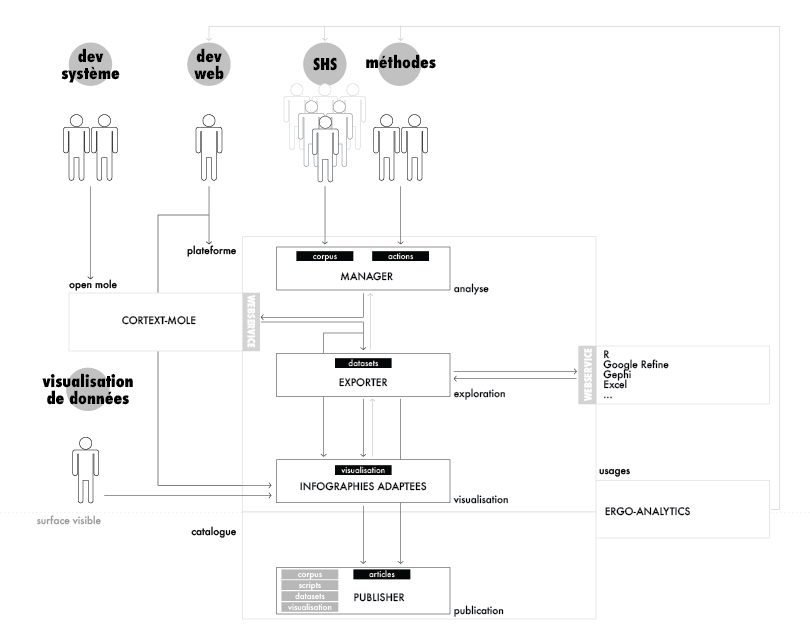In 2010, Centre Pompidou Museum (National Museum of Modern and Contemporary Art) consulted several french design agencies for the redesign of the museul website.
Blind was part of those agencies. A lot of attention have been put on the articulation between information architecture and information design.
We lost the constest (still being 6th of 30) but it was a great experience. Let's say that Selina Ebert, art director, provided the great modernist spirit that fueled the whole project.
Concept maps
For this project, we made an heavy use of concepts maps as blueprints for the organization between content and interaction. As functionnalists, we primed minimalism between the use and the form.
Maps were great tools to communicate and get quick consensus on fundamental understandings of the team.
Information architecture was important as a set of skills in order to share complex concepts, various point of views and transforming the collective works as a sustainable space of ideas and concepts.
Web of objects
Even if it was requested by the brief, we tried to push the innovative concept of web of objects to a certain reality. We then provided a full transversal framework of independant information designed dispositifs. The website is used as intended but is also augmented by the eco-system in which it is taking part.
The idea is not new. We just take it as something to realize. Most of the concept and analysis work can be found in books such Bruce Sterling's Shaping Things.
Crafting the semantic web of information



















